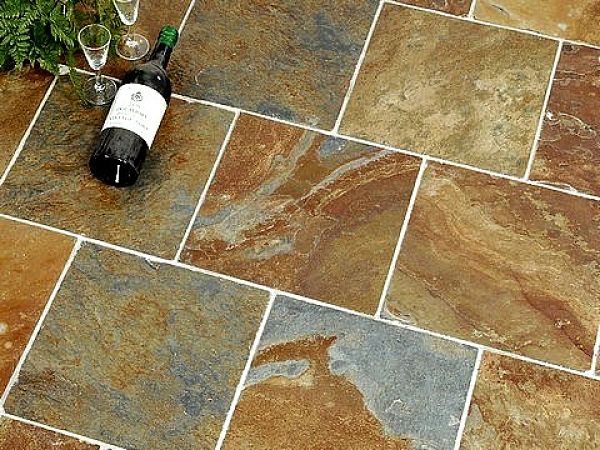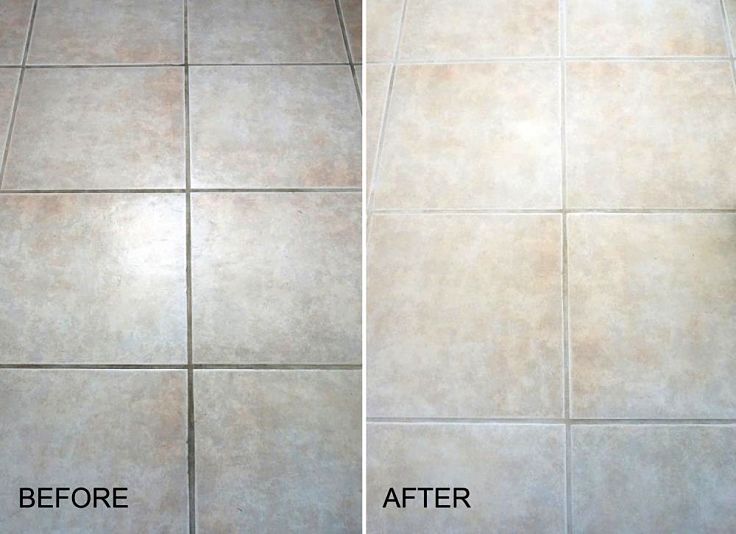How to Clean Slate Floors, Wall Tiles, Bench Tops, Bathrooms, Kitchen Tiles
Slate is a stone which has been produced from shale squeezed into plates under extreme heat and pressure. It consists of sedimentary clay and volcanic materials fused into sheets. It may have a fairly rough surface unless it has been ground smooth.
The uneven surface creates a delightful texture that many people love, but it does make it harder to clean. Slate tiles for floors, kitchens and bathrooms are now very popular and are available in a huge variety of colors and textures.
Cleaning slate floor or wall tiles is relatively easy, especially if the surfaces are well looked after to maintain them in good condition. The important to remember that slate is very porous, relatively soft and is generally protected by some form of sealant that helps overcome slate's softness and porosity and provides its finish.
When cleaning it is important that you do not use strong harsh chemicals or abrasives that break through the protective wax or other sealant that has been applied to the slate.
Scratches and abrasions also may also break through the seal. If that happens stains, and even the cleaning fluids themselves, may soak into the shale itself and cause damage and discoloration.
You don't want to kill your shale with kindness by over strenuous cleaning. Strongly alkaline cleaning solutions can sometimes cause pits or cracks in the slate tiles and so they should be avoided. You should also avoid strong acid cleaners as well that may attack the sealant and slate surface.
This article provides a detailed guide on cleaning slated floor and wall tiles and tips for keeping slate clean, removing stains and spillages, and avoiding scratches and marks.

Regular Dust and Dirt Removal and Cleaning Schedules are Very Important
The general care and maintenance of slate flooring and wall tiles is not complicated, but some simple precautions make all the difference. When slate flooring gets dirty or stained it can be traced to simple neglect. The same applies to wall tiles in the kitchen and bathroom. The secret to keep slate clean and in good condition is to cleaning regularly following a schedule and to always clean up any spillages just after they occur. If you keep the slate clean you will generally not have major stains to contend with.
Dust-mopping and Vacuuming to Keep Slate Floors free of Dirt and Dust
Dust mopping is probably the most important thing to do, but it is often over looked. Dust, dirt and grit are what causes most surfaces to scratch and get marked. Floors that are regularly dust-mopped have been shown to stay scratch-free and shinier longer. So it pays to dust mop your floor daily, and before you clean with a wet mop. Don't use any oil-impregnated dust mops on slate flooring, just a clean dry and grit free mop. When dust mopping, move the mop in one direction only - not back and forth. Buy a good-quality machine-washable mop or good quality and keep it clean by washing it regularly. Keep one dust mop for the slate floor and don't use it for anything else.
Use welcome mats, rugs and similar mats around the edge of the slate floor to help capture dirt before it is walked on the floor. It is a good idea to have mats both inside and outside doorways leading onto a slate floor.
Damp or Wet mopping to Clean and Remove Residues, Stains and Marks
For a domestic slate tile floor you should aim to clean it with a wet or damp mop is about once a week (more frequently if it shown dirty sooner). It partially depends on the amount of traffic and the finish (honed, coated, textured).
The best cleaner is plain hot water or a very small amount of mild detergent. Run the squeezed mop lightly over the floor surface, rinsing as required. Keep the water hot. If you have stubborn stains treat them as spots, rather than applying the cleanser to the whole surface. Adding a small amount of vinegar to the water helps clean it and provides a little shine. If the slate finish is intact residues will wipe off easily. Overuse of detergents can make the floor dull and slippery. The floor should be allowed to air-dry.
Removing Old Wax and Sealants, and Resealing
Most slate floor has been covered with a wax or some other type of coating. Periodically these coating need to be replaced. It is best to employ a professional as the old coating has to be stripped off before the new one is applied.
Slate-Safe Cleaners
DO NOT use any acid or alkaline cleaners (even natural types, such as strong or undiluted vinegar), that could damage the floor (only use pH neutral detergents, sparingly). Alkaline bleach and powder based cleaners are not recommended. Choose cleaners specifically designed for slate floors and use sparingly. Follow the manufacturers guides. Mild detergents work very well.
Removing Spot Stains and Spills
All spills (especially wines and spicy foods) should be wiped-up immediately with a paper towel or soft cloth. Do it fast to prevent the spill penetrating into the slate. Don't let the spill dry.
For spot stains sponge over with using a pH-neutral floor cleanser and hot water or a little mild detergent. Get a specific purpose slate cleaner from your slate supplier and follow the instructions carefully.
DO NOT use any of the following:
- high pressure and steam cleaners - because they will remove the wax or other sealant.
- scouring pads and abrasives because they will scratch the surface.
- alkaline cleaners not specifically formulated for stone.
- abrasive cleaners that include powders.
- vinegar (except very dilute), bleach, ammonia or other strong general-purpose cleaners.
- cleaners that contain acid such as bathroom cleaners, shower cleaners or tub cleaners.
Cleaning Slate Tile Grout
To clean heavily stained grout that is not colored, use an old toothbrush dipped in a 50/50 solution of hydrogen peroxide and water (but keep it off the tiles). There are many other ways to clean grout that you can try. Many stone tile suppliers sell products specifically designed to remove grout stains. Be careful not to bleach the color in the grout.



